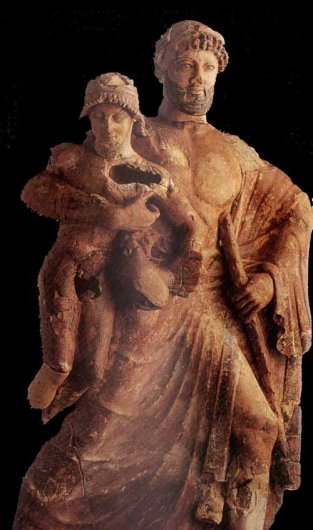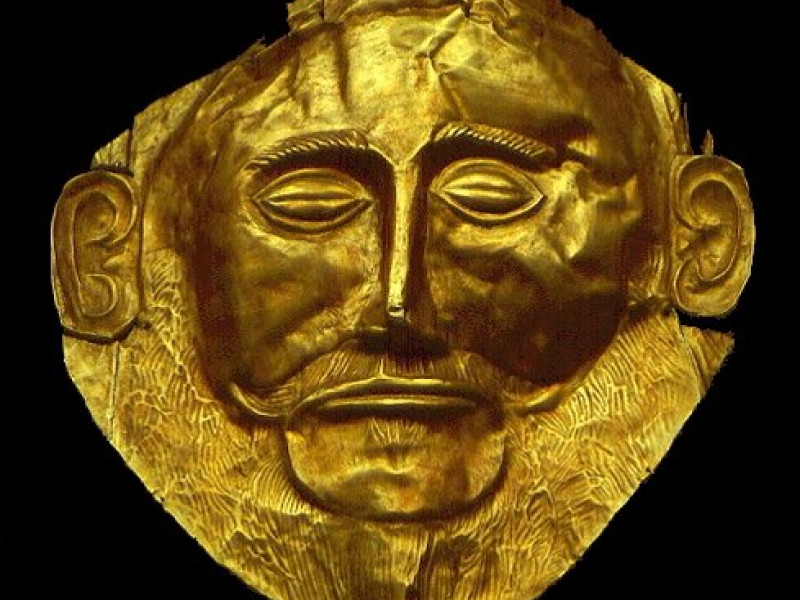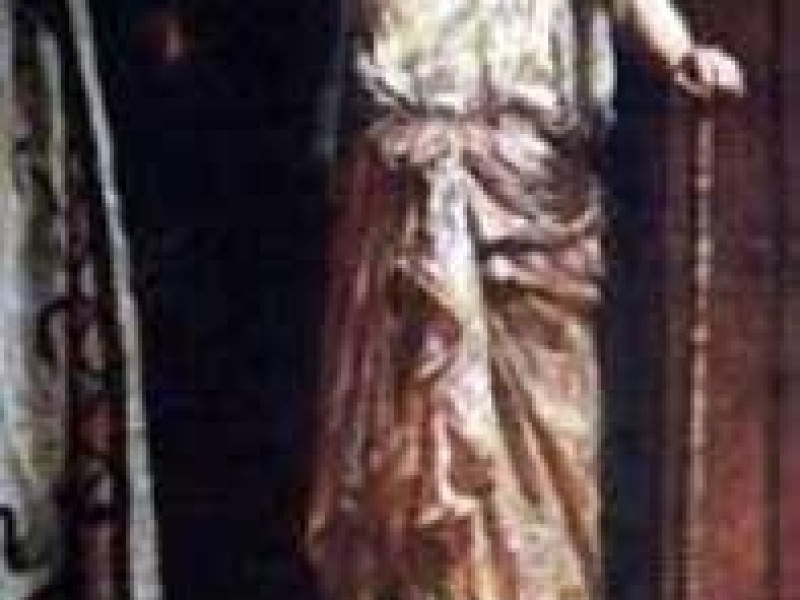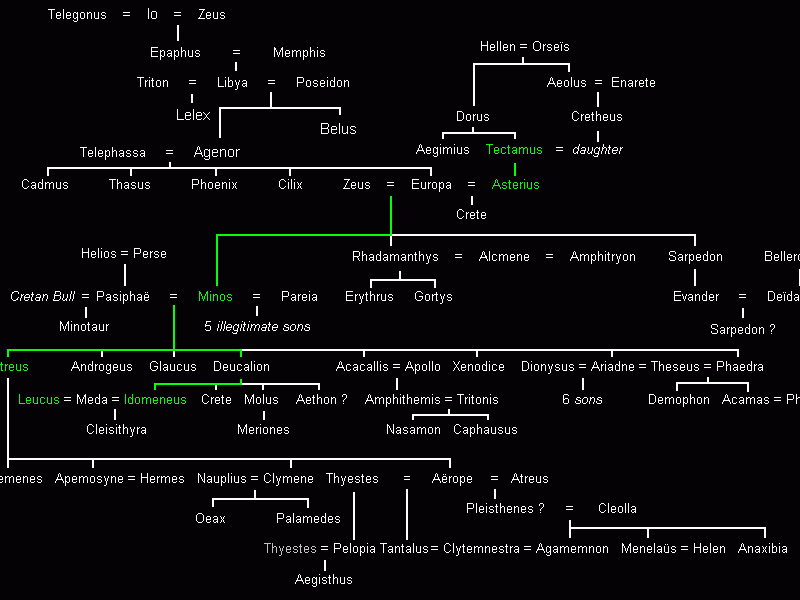Two Ruling Houses
Tros (Τρώς) succeeded his father Erichthonius to the throne. He gave his name to the land (Troad) and to the people living in the Troad (Trojans). Tros was married to Callirrhoë (Callirrhoe) and was the father of Ilus, Assarcacus and Ganymede.
His son Ganymede (Γανυμήδης) was so beautiful that Zeus fell in love with the youth. Zeus transformed himself into the form of an eagle and abducted the youth, carrying Ganymede to Olympus in his talons. Ganymede became the cupbearer on Olympus. Zeus gave Tros a couple of immortal horses and vines made of gold, to compensate for the abduction of the king's son.
The Dardanian people were then divided into two separate groups, between his two other sons by Callirrhoë (Callirrhoe): Ilus and Assaracus.
Assaracus succeeded his father and continued to rule at Dardania, near Mount Ida, while Ilus (Ἴλος) chose to move closer to the sea. Ilus took part in games held by an unnamed Phrygian king, where he won a wrestling match. His prize was fifty boys and fifty girls, as well as a dappled cow. A seer told Ilus that he must follow the cow to where it lay down, and there, build his city. The cow rested on the Hill of Phrygian Ate.
That night, Ilus prayed for a favourable sign from Zeus, asking if this was where he should build his city. The sign came in the wooden statuette, depicting either the goddess Athena or her late companion Pallas, daughter of Triton. The statuette was called the Palladium, and it fell out of heaven and landed beside Ilus' tent. This Palladium would protect Troy from falling to the Greeks in the Trojan War, while the image remained in the city. With this sign, Ilus founded the city that he named Ilium, after himself. Ilium was, however, often called Troy, after his father.
So the two brothers began to rule two separate houses in two different cities.
On the Trojan line, Ilus, who was the founder and king of Troy, married Eurydice and became the father Laomedon. As it was said before, his daughter Themiste married his nephew Capys (of the Dardanian line). His son Laomedon succeeded Ilus.
On the Dardanian line, Assaracus' son Capys married Themiste, daughter of Ilus and Eurydice. Capys became the father of Anchises.
Anchises (Ἀγχίσης) was a lover of Aphrodite, who bore him a son and hero, Aeneas. Aphrodite warned Anchises not to reveal their relationship to anyone. But Anchises had forgotten her warning when he became drunk one night. So Zeus struck Anchises with a thunderbolt, when he boasted of having slept with the love-goddess. He became a cripple, unable to walk.
His son ruled Dardania in his place. Aeneas was a brave warrior and a pious leader. At first, Aeneas did not take part in the Trojan War, until Achilles invaded his land.
When Troy fell in the war, Aeneas was the only leader to survive. Different authors gave different accounts of his life after the war. According to the Roman poet Virgil, in The Aeneid, Aeneas escaped capture with his father and son and travelled to Latium, Italy. Anchises died in Eryx (Sicily) before they could reach Latium. Aeneas won the right to stay in Latium when he became victor in the war against the Latins. See Aeneas or The Aeneid, for more details about Aeneas' life.
Of the two royal lines, those of Troy (Ilium) became more powerful than the older Dardanian line, under the rule of Laomedon, but there were only three generations of kings in Troy (compare with Dardania having eight kings).
Related Information
Name
Tros, Τρώς.
Ilus, Ilos, Ἴλος.
Anchises, Ἀγχίσης.
Eponyms
Tros - Troy, Troad.
Ilus - Ilium.
Sources
The Iliad was written by Homer.
Homeric Hymns.
The Little Iliad from the Epic Cycle.
Library and Epitome were written by Apollodorus.
Fabulae and Poetica Astronomica were works by Hyginus.
The Aeneid was possibly written by Virgil.
Library of History was written by Diodorus Siculus.
Related Articles
Erichthonius, Aeneas, Zeus, Aphrodite.
Genealogy: Houses of Troy
Facts and Figures: Astronomy, see the constellations of Aquarius and the Eagle.
By Jimmy Joe






